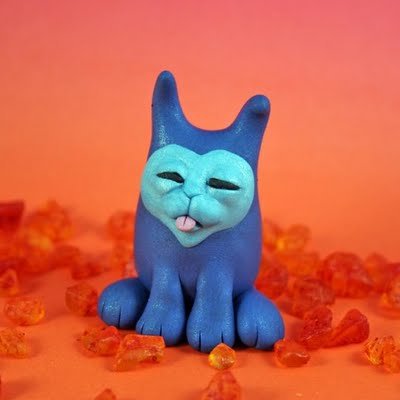|
|
Plasticine Monster
|
History
Plasticine was formulated by art teacher William Harbutt of Bathampton, in Bath, England, in 1897. He wanted a non-drying clay for his sculpture students. Although the exact composition is a secret, Plasticine is composed of calcium salts (principally calcium carbonate), petroleum jelly, and long-chain aliphatic acids (principally stearic acid). It is non-toxic, sterile, soft, malleable, and does not dry on exposure to air (unlike superficially similar products such as Play-Doh, which is based on flour, salt and water). It cannot be hardened by firing; it melts when exposed to heat, and is flammable at much higher temperatures.
A patent was awarded in 1899, and in 1900 commercial production started at a factory in Bathampton. An improved formulation was patented in 1915. The original Plasticine was grey, but the product initially sold to the public came in four colours. It was soon available in a wide variety of bright colours. Plasticine was popular with children, widely used in schools for teaching art, and has found a wide variety of other uses (for example moulding casts for plaster, and plastics). The Harbutt company promoted Plasticine as a children's toy by producing modelling kits in association with companies responsible for popular children's characters such as Noddy, the Mr. Men and Paddington Bear.
|
|









